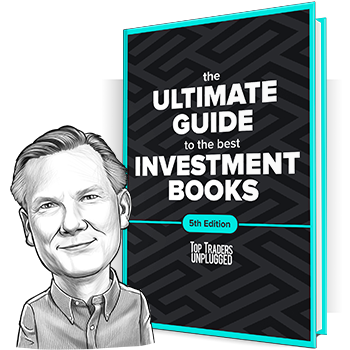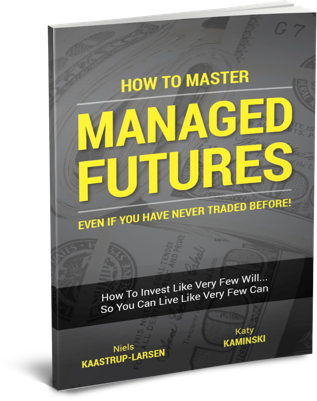Redefining Resilience in Trend Following

- 2023 was a tough year for trend following, but we can learn a lot from the investors who came out on top.
- Bowmoor’s Liddle and Abbot espouse what they call “MECE” (mutually exclusive, collectively exhaustive) portfolio construction.
- What’s the rationale behind trading a limited number of markets? Why should we still maintain an optimistic view on the future of trend following? Read on to find out.
Trend following is both an art and a science, demonstrating resilience and adaptability even amid the unpredictable currents of global markets. While 2022 was a banner year for many trend-centric investors, 2023 was a tumultuous year for most. But U.K.-based trend-following firm Bowmoor Capital’s flagship investment strategy, the Global Alpha Fund, posted impressive returns — and reports a fantastic start to this year.
As we venture deeper into 2024, it’s clear that this single-strategy fund, launched in the summer of last year, is not just surviving; it’s thriving. That’s why Top Traders host Moritz Siebert wanted to talk to Bowmoor’s CEO Richard Liddle and CIO Gareth Abbot about how they manage a portfolio that weathers any year’s financial storms.
“We combine a highly efficient trend capture with the traditional conservation of capital to produce our edge,” says Gareth. “This is what drives the mathematical expectancy, which any strategy requires to be profitable — positive mathematical expectancy is required.”
They call their strategy “MECE” (mutually exclusive, collectively exhaustive) portfolio construction.
On an Open Interest episode of Top Traders Unplugged, Richard and Gareth talk about why they trade a relatively small number of markets, which markets they choose and their outlook on the future of trend following as an investment strategy.
Market intelligence
The Global Alpha Fund trades 21 carefully selected markets in every sector of the global economy, which means that “unlike our competitors and our peers who may trade hundreds of markets, we are the anomaly,” says Richard.
“They’re highly liquid markets and they’re selected exactly for that. So they are the 21 most liquid markets, meaning that we’re never going to be left in a position where liquidity for the fund may become an issue.”
Why just 21 — and why not 20 or 22?
With nine financial markets, nine commodity markets and three metals (both precious and industrial), “there’s a symmetry in the design and a good balance,” says Gareth.
The contents of Bowmoor’s portfolio cover indices, including Euro stocks, the Dow and the Nikkei — as well as interest rates, including the SOFR, the Euro bond and the U.S. long bond.
In the realm of currency, the Global Alpha Fund includes the British pound, the Canadian dollar and the Australian dollar, as well as three metals (gold, copper and palladium). In the energy sector, it covers crude oil, heating oil and natural gas.
The portfolio also covers commodities, including two “soft” ones (cocoa and coffee), cattle, lean hog, corn and soybeans.
“We don’t need many positions in this compact portfolio to drive performance and are in a pretty good place with three fairly strong positions driving performance close to 9% so far,” Gareth continues.
Those positions include one in the stock markets, one metal and one “soft” commodity.
“We’re enjoying this month,” he says. In less lucrative times, “we can have a majority of small losing positions that are smaller than usual,” he adds.
Portfolios and profits
The MECE trend-following concept is “really powerful for us — because it’s not just the portfolio,” says Gareth.
The strategy is “no doubt, one of our strengths,” he adds. “It’s not just a portfolio designed to minimize correlation and maximize diversification.”
They take a “broad and comprehensive approach” to trend following, using a system-driven process to portfolio construction. Profits must frequently outweigh losses.
In the case of trend following, that means the portfolio must typically boast a low win rate and a high-profit rate.
“We cover all sectors of the global economy from the metals to stock markets to softs, et cetera,” Richard says. “Ultimately, we work around what we refer to as a MECE portfolio construction, where we’re mutually exclusive but collectively exhaustive, hence maximizing diversification.”
MECE and mathematics
One of the system’s foundations is the efficiency of the trend capture, which “drives the edge,” Gareth says. “Mathematical expectancy is … ultimately the key. With that in place, it comes down to how to back your edge and how to manage risk, essentially.”
The MECE portfolio features a “highly liquid construction” of the “highest global liquidity [of] major macroeconomic markets,” he explains.
To value the impact of every trade and avoid dilution of the system, we want to value the system,” Gareth points out. “Value what we do, value our trend capture. We cover every sector, every region around the global economy … equally weighted across financial and commodity markets.”
But with this compact diversification in the markets and such a strong internal diversification with the system strategy, the reliance on even just a single market trend to drive portfolio performance is of vital importance. “One strong trend can generate all of our returns while we simply deal with the background noise,” says Gareth.
Positions are weighted to offset and normalize daily movement across non-trending markets like a noise-canceling effect in the background. Bowmoor builds its positions in “normalized units,” so a good day in a stock market can offset a bad day in a soft market.
That means Bowmoor quantifies investments not merely in terms of monetary value or the number of shares, but in units that represent a standardized measure of market exposure or risk. Essentially, “normalized units” are a way to equalize or standardize different types of investments so they can be compared and combined in a portfolio to achieve a specific risk-reward profile. Bowmoor can diversify its investments across various asset classes by adjusting the size of positions according to the risk and volatility associated with each investment.
“Non-trending positions will cancel one another out while performance is driven by our strong positions or the trends that we capture,” says Gareth. “Just one [trend] can drive the entire portfolio performance, which is something we value greatly.”
At its core, Bowmoor's approach is about filtering out the noise and focusing on the trends that matter, proving that sometimes, one strong move is all it takes to succeed.
This is based on an episode of Top Traders Unplugged, a bi-weekly podcast with the most interesting and experienced investors, economists, traders and thought leaders in the world. Sign up to our Newsletter or Subscribe on your preferred podcast platform so that you don’t miss out on future episodes.
Most Comprehensive Guide to the Best Investment Books of All Time

Most Comprehensive Guide to the Best Investment Books of All Time
Get the most comprehensive guide to over 300 of the BEST investment books, with insights, and learn from some of the wisest and most accomplished investors in the world. A collection of MUST READ books carefully selected for you. Get it now absolutely FREE!
Get Your FREE Guide HERE!





